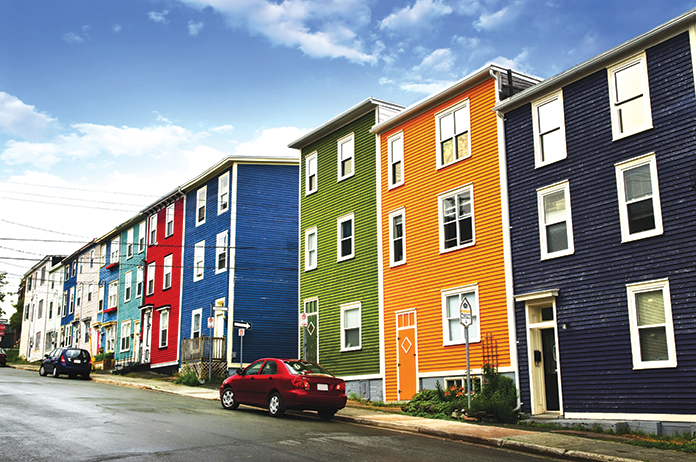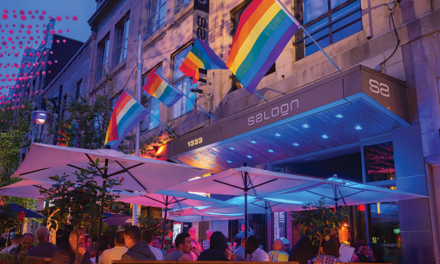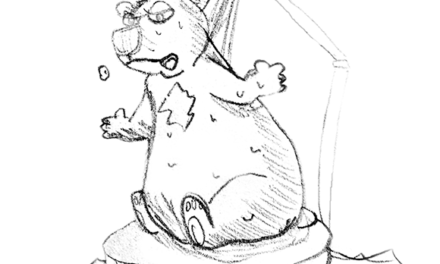By Diane Slawych – Toronto, ON
There’s nothing more eye-catching on a residential street than a row of brightly painted houses. In the last few decades, jelly bean coloured homes in hues ranging from magenta and fire engine red, to chrome green and canary yellow, have been popping up with increasing frequency all around the country.
The trend appears to have started in St. John’s, Newfoundland, where it’s most pronounced, and spread to other locales, particularly on the east coast, all the way up to the far north. 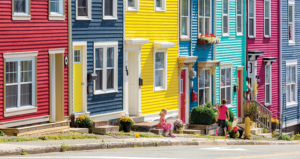
Some say the craze began with the wider availability of vibrant coloured paints. Others claim it was an attempt to enliven streetscapes in cities where overcast days are common and the summers are short, or that it helped to make land more visible to sailors at sea in foggy conditions. Whatever the reason, they’re an eye-popping celebration of colour that have become a popular subject for shutterbugs.
“Can you show me jelly bean row?” That’s a question Jerry Dick, Executive Director, Heritage Foundation of Newfoundland and Labrador hears quite often when he’s outside the province. “But it’s not a real place,” he explains. People, he acknowledges, are responding to tourism brochure pictures of St. John’s and its candy coloured houses. It’s safe to say that no city in Canada has more of them…but it isn’t just one row.
“Virtually everything downtown that is clapboard… is jelly bean,” he says, singling out Gower, Colonial, and Victoria Streets as prime examples. He attributes the new look to gentrification. “The process started in the 1970’s 80’s and 90’s and the oil boom helped it along”.
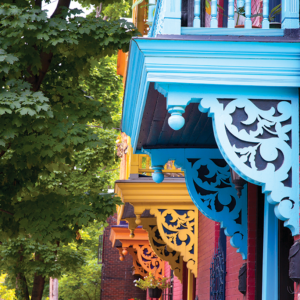 Long before commercially-made paints became available in the early 20th century, islanders were making their own paint using a mix of dry ochre, fish oil, seal oil, or sometimes linseed oil and applying it on their stages, stores and net lofts. Needless to say the colour palette was quite limited.
Long before commercially-made paints became available in the early 20th century, islanders were making their own paint using a mix of dry ochre, fish oil, seal oil, or sometimes linseed oil and applying it on their stages, stores and net lofts. Needless to say the colour palette was quite limited.
According to the Heritage Foundation, row houses in downtown St. Johns were often painted one solid colour, with little attention paid to trim work, while beyond the city, private homes were typically painted plain white.
However, that’s been changing over the years in rural parts including out port communities where it’s not unusual to find fishing sheds and other functional buildings painted in lively colours. In Trinity Bay, says Dick, a previously nondescript building was brightened up with segments of flashy colours. “Life imitating marketing,” he observes. “That’s the current fashion.”
Nova Scotia has its own version of jelly bean row. In Halifax, you’ll find it on North Park Street, Creighton Street, and Maynard Street… the latter, a formerly run down area that has recently been revitalized with new (and colorful) townhouses. The move has prompted other nearby homeowners to spiff up their houses with a new coat of paint!
“Compared to St. John’s the colours here are not quite as vibrant,” says Pamela Wamback of the Nova Scotia Tourism Agency. “The shades are lighter, almost pastel-like.” On bustling Agricola Street, which is quickly becoming home to trendy restaurants and businesses, some facades are even decorated with artwork.
Meanwhile, in the UNESCO town of Lunenburg, blue, orange, green and yellow painted homes can be seen leading up from the waterfront behind the bright red buildings that make up the Fisheries Museum of the Atlantic.
On King Street, the owners of the Mariner King Inn and four other
heritage structures dating back to the 1830’s, have painted their buildings in such wildly exuberant colours, they’ve been dubbed the “UNESCO Fresco.”
The northern equivalent of the “UNESCO Fresco,” is called “Easter Egg Alley,” or at least that used to be the nickname for the row of government employee housing in Inuvik. Now, they’re just known as “the smartie houses” (after the multi-coloured candies). In a city located 200 km north of the Arctic Circle, where winter days are all too short, a splash of colour is often a welcome sigh.

